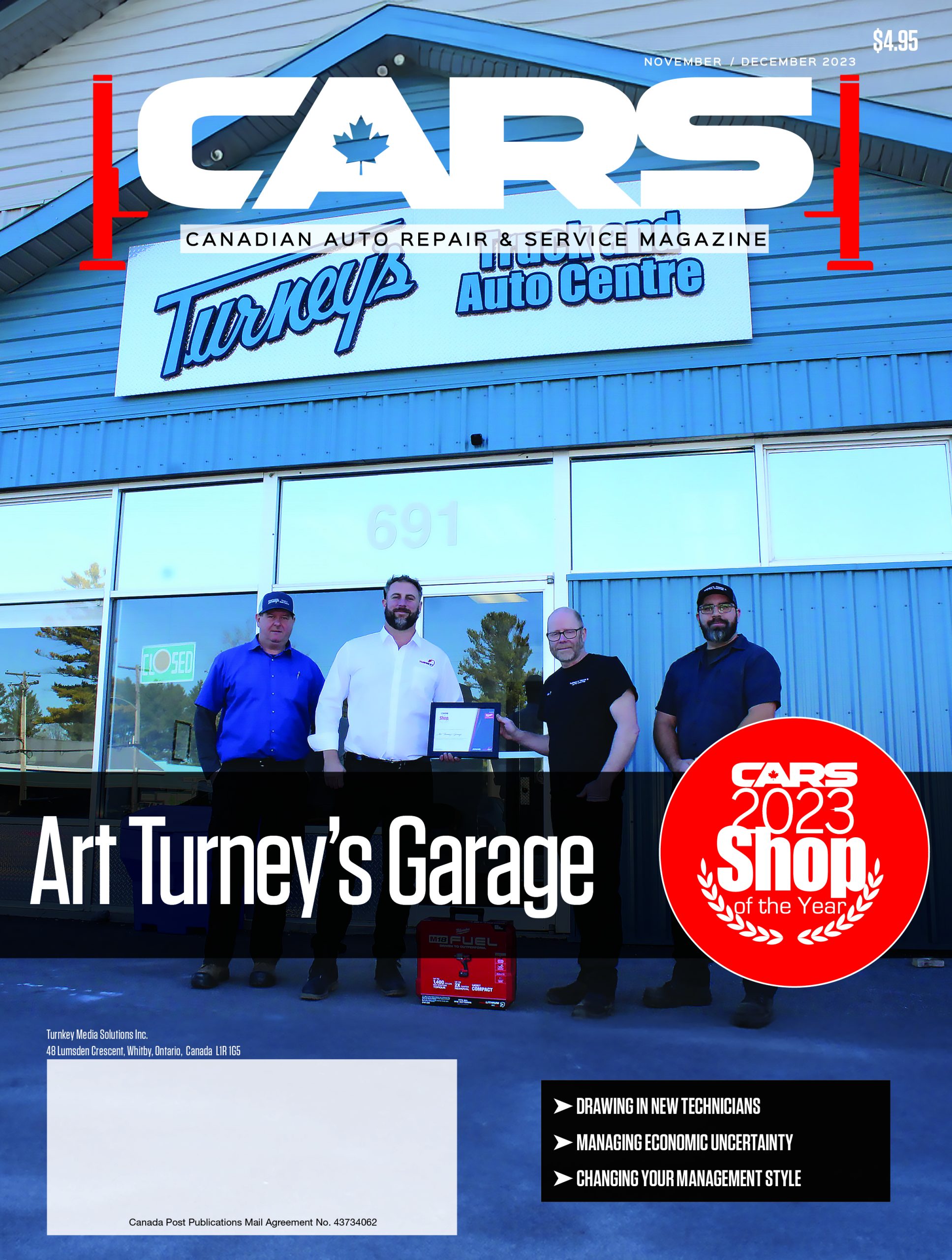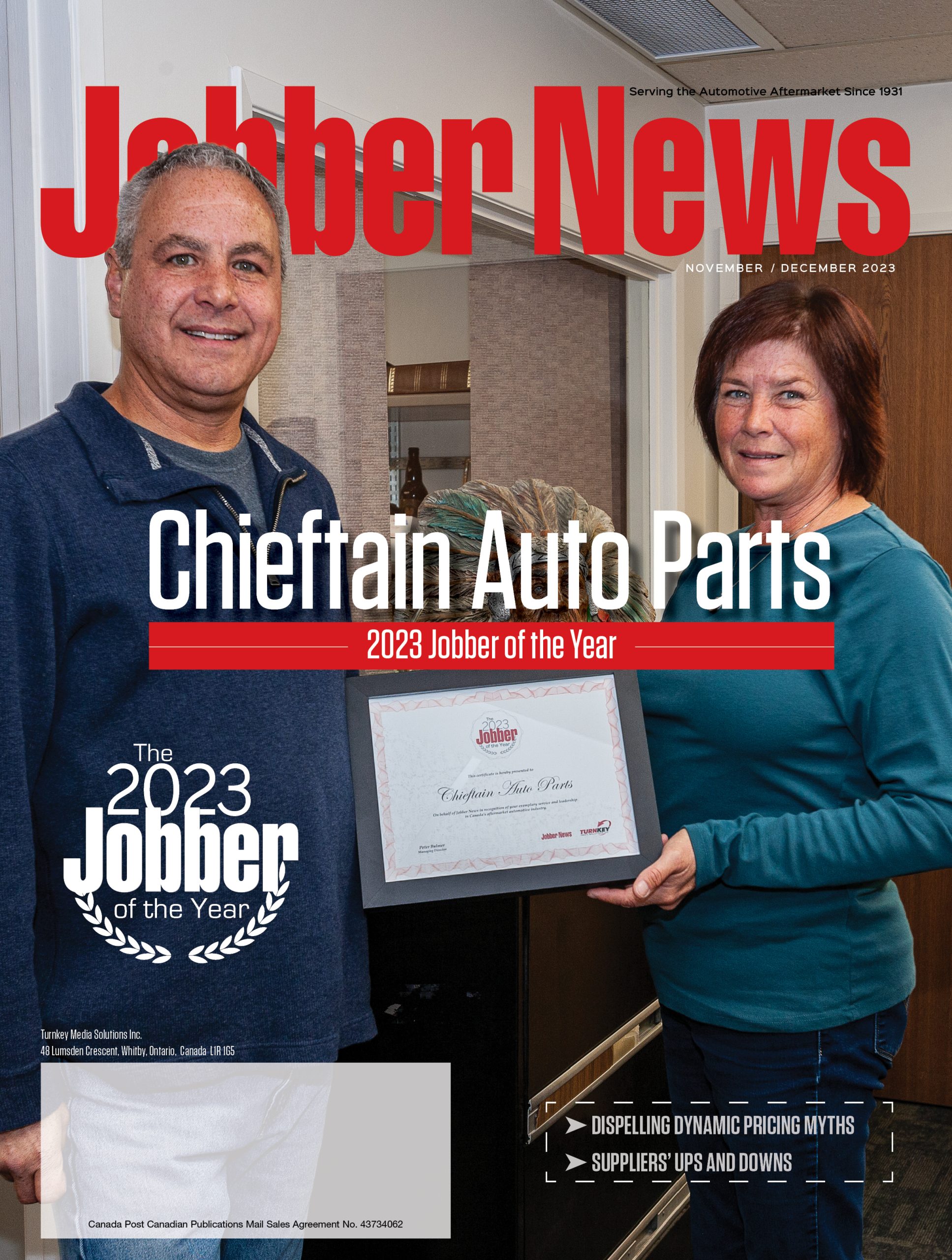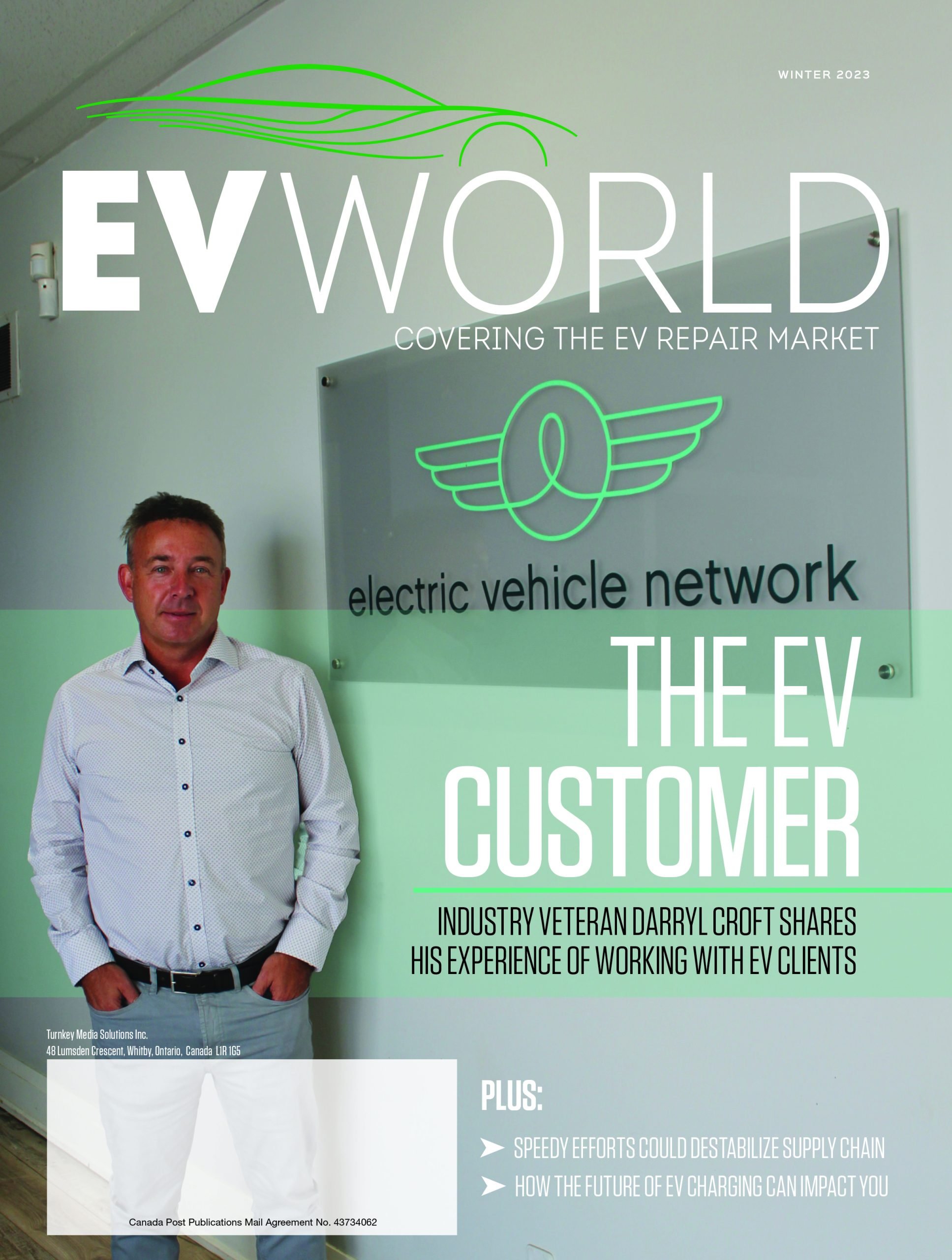
Bruce Eccles Auto Service: 2001 SSGM Garage of the Year
Dundas, Ontario, a town of just over 30,000 in the now amalgamated area of greater Hamilton is hardly the picture of a major metropolis. It’s a quaint, charming place with a classic downtown street of century buildings and gift shops. Dundas is also a town with some 17-odd auto service businesses, well beyond the number needed by a market that size. It’s a perfect size, however, for SSGM’s 2001 Garage of the Year, Bruce Eccles Auto Service Ltd. Bruce and Claire Eccles business is, like Dundas itself, understated. The operation is based out of a conventional three-bay converted Esso outlet at 121 King Street West, the main thoroughfare in town. Across the street, however, is Eccles’s satellite building, a five bay operation that includes laser alignment equipment and in-ground emissions dynamometer for the Ontario Drive Clean program. The I/M program in fact drove the unusual choice to add a facility rather than move to a different facility altogether. Bruce Eccles relates: “When Drive Clean came in, about two and a half, three years ago, we leased that building and renovated it. One hoist and a dynamometer. We painted the building and put a customer waiting area in. We didn’t know what to expect with Drive Clean, and I already had three very busy bays. It was a very typical rad shop. The word “Drive Clean” has the word “clean” in it, and that’s how I like to operate. So we put the dyno in, freshened up the whole building, and bought all new equipment including an alignment rack, the John Bean digital alignment system. Before that I was jobbing it all out. We picked that up and added a little more to our business. So it’s been very good.”Eccles has added a third building, which is currently leased to a local detailing shop. One advantage of the multi-facility strategy is built into the way the operation is organized. The satellite 5-bay shop has completely independent capability, with dedicated brake and tire equipment along with the dyno and alignment bench. If the business outgrows its current setup, which seems likely with annual growth of at least double the inflation rate, each address can be sold as an independent, freestanding auto repair business.Getting to “Very Good”, as is usually the case for successful businesses, took hard work and creativity. “I started in 1975 in the industry. I started on my own in 1984, and moved in (to the current facility) in 1993. I was a mechanic and I was making $10.50 an hour. I went to the bank and they wanted my house as collateral. I said ‘you’re not getting my house’. So I phoned a friend of mine who is in business; he struggled when he first started. He loaned me 15 grand. I paid him back in a year, and I’ve never looked back.” Like many owners operating out of converted gasoline retailers, the spectre of the tanks was a problem. “When I bought it, they wouldn’t give me a mortgage, even though I had a clean bill of health. I sent soil samples down which showed no problem. The bank wasn’t interested because it was a former gas station. So they set me up with a small business loan. But I had already been in business nine years.”Eccles also prefers to purchase rather than lease equipment, mainly out of comfort with owning business-critical machines. “I lease only the one piece of machinery, and that’s the Drive Clean equipment”, he says, noting that the decision to lease the I/M dyno was a tactical one to wait and see if the program would fly.Paying down debt rapidly is only one of Eccles success strategies. Another was a decision early on to seek management training:”I took two courses with Bob Greenwood. My first course was in 1992. I had a really good business, but I needed a little wake-up call. I wasn’t getting lazy, but I was overlooking some basics, so Bob set me straight on a few things. I have a great imagination for promotion and it helped me with that. We never stopped promoting our business, although we have a very good established clientele, I set aside 18,000 dollars a year for promotion.”Eccles spends that considerable promotional budget tactically, mainly by extensive local sports team sponsorships and related advertising. Hockey arena endboards, several hockey teams and even the Zamboni are utilized. Summer promotion includes ball teams and a parade float constructed from Eccles’s Toyota tire wagon, “Tired Timmy”. Eccles doesn’t miss any opportunity to promote his business, and the walls of his customer waiting area are papered with newspaper stories about shop and staff. And they had much to write about this fall with two of Eccles’ technicians going to the ACDelco Technician of the Millennium II competition, Jeff Taylor and David Jaggard. Of the four techs on staff, all are carded Drive Clean inspectors (approved to administer the test) and two are certified for repair. Even “air traffic controller” Anne Durand was set to the orientation course for the I/M program. Training is an area where Bruce has some definite opinions: “The training happens through my jobber. That’s how all this started. I had some real concerns about keeping the guys on top of it. There wasn’t a lot of good training in place. Dave, myself and Jeffrey all went the traditional way: the 8,000 hours of apprenticeship.” Eccles has concerns about technicians who are fast-tracked through community college programs that lack real-world training. “Those guys are so weak it’s scary. They’re not prepared to come and work without some really serous supervision.” Bruce also attributes the lack of proper initial training as a factor in the current technician shortage. “This is probably the most overlooked career choice, he declares. “People talk about the trades, but how many times do they say auto technician or mechanic? They say ‘plumber’ or ‘electrician.’Good people, business management training and promotion are prerequisites for a successful operation, but are not guarantees in themselves. Bruce Eccles has a couple of “secret weapons” which, when added to existing strengths, make the business outstanding. One is a program to conserve cash flow by minimizing standing inventory: “I went on a new campaign last year, I cut my inventory in half. I forced my suppliers for faster service and told them I don’t want to keep as much. I had 45,000 dollars worth of inventory, maybe even higher, and I’m down to high 20’s, low 30’s now. And all I did was start using up and not reordering. I told my suppliers “I’m not restocking.” For instance, I do not stock brake pads or brake rotors. A lot of people would disagree with me on this. But quite often a car comes in for a brake inspection. You need pads and rotors, and maybe it’s got worn flex hoses. You can’t possibly stock it all. Now I put an estimate together for a customer, and if we’re really busy, the wheels go back on it, it goes back outside. We are already working on another car, and we’ve got all the parts on order. And it all comes down to this: as long as my supplier is doing his job, I get parts in an hour to an hour and a half. I deal with one supplier mainly.” As an ACDelco installer, Eccles sources an estimated 95 percent of his parts through his local affiliate, Toronto & Hamilton Auto Electric. Information is from ALLDATA, accessible from each bay, and the business operates with Lankar Systems software, which is upgraded along with inventory during January, which is traditionally a slower month.Eccles’s other “secret”? Put simply, outstanding customer service. The strategy Bruce employs is to avoid sending a client (which is how he refers to his customer base) anywhere else for any form of automotive service. This philosophy extends to windshield repair and paint and body, both of which, although outsourced, can be handled on an Eccles work order. For one elderly client, Bruce recommended a new car model, then made the deal with a local dealer on her behalf. Naturally, she returns to the business for all scheduled maintenance. A digital camera is used to record images of especially messy jobs, illustrating the problem for clients. Road tests are another satisfaction tool that also drives work to the bays. “I’m a firm believer in road tests, states Bruce, who has tested vehicles for up to 100 kilometers to make sure a job is right. “When I get a chance I’ll run cars around the block just when we do an oil change, for example, if I’m a little nervous about popping in a wheel bearing. It’s amazing how much extra work you get out of a road test. And you’re doing the customer a huge service. Definitely when we do any kind of repair everything gets a road test.” And how does Eccles afford high-level service? Tiered door rates ranging from $78 to $119, rates that his clientele accept as reasonable for high-level service. Does it work? The rates hold despite four other automotive service businesses within one block of Eccles King Street West location.In the 17 years that Eccles Auto Service has been in business, the pace of the industry has accelerated dramatically. “What I used to do in a year in 1984 when I opened, I do now in two months”, states the 45-year-old father of three, who feels comfortable enough with the operation to average eight weeks of vacation time per year. It’s a business that has no neon or architectural design, but outstanding people and modern equipment and management methodologies. Ask Bruce Eccles to describe his operation, however, and he’ll draw an analogy to another service business. “This is like a little barber shop, he says. “We’ve got eight bays, but it’s still a small town business.”
.png)






Have your say: